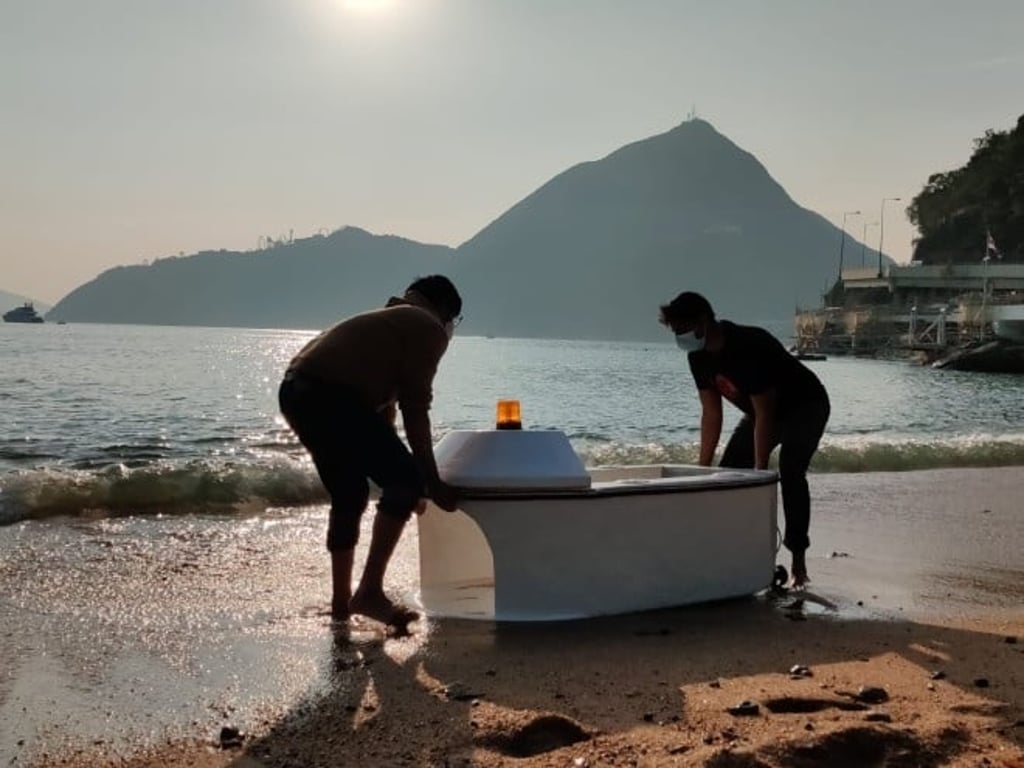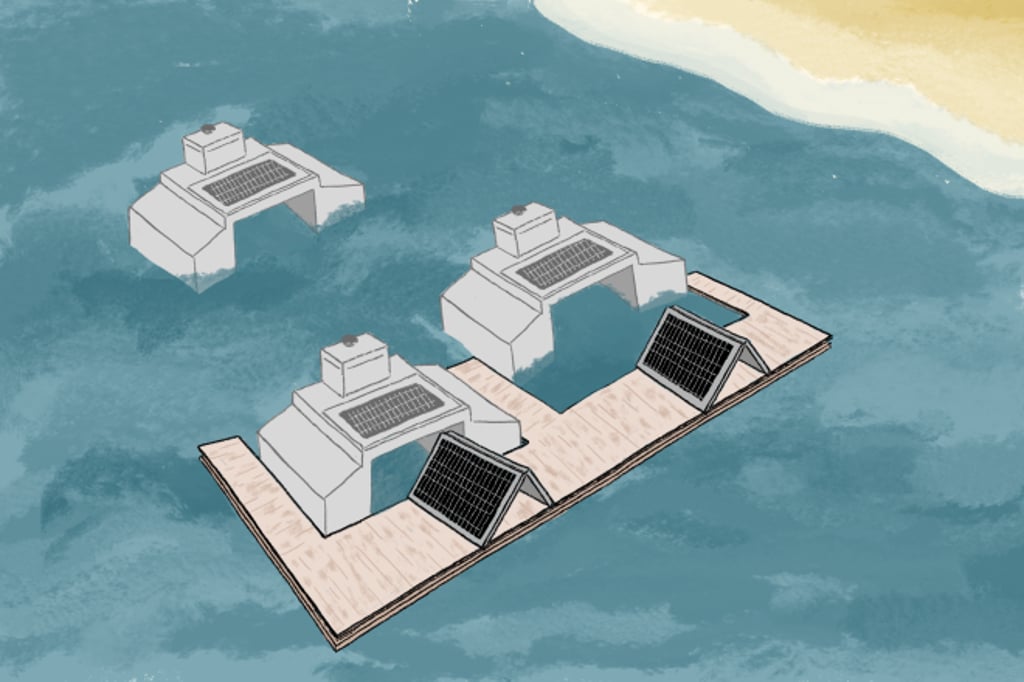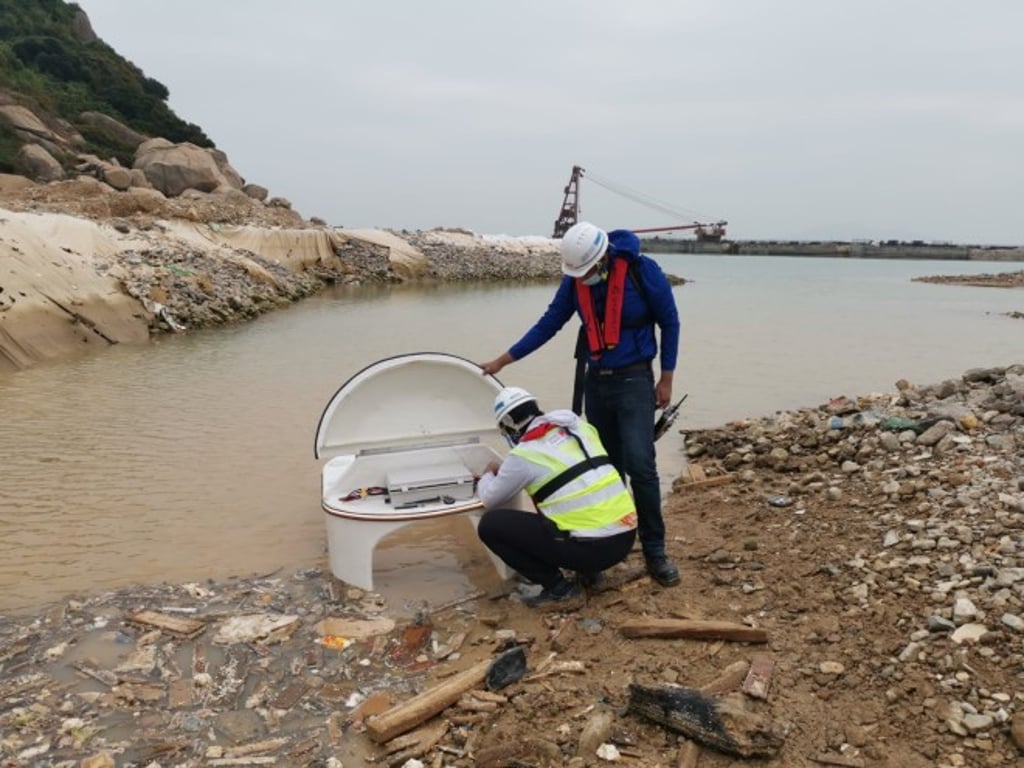Hong Kong start-up Clearbot set to revolutionise marine trash collection
- Automated robot can detect, remove and analyse debris in a variety of water systems
- Winner of HKTDC’s Start-Up Express began as a student project at HKU

[Sponsored Article]
The staggering amount of plastic and other waste clogging the world’s oceans and waterways—including the equivalent of 250 pieces of debris for every human in the world in the Great Pacific Garbage Patch alone—is one of the biggest crises of modern times. But so far most efforts to combat the problem have been relatively primitive, from excavators scooping up sludge to sampans dragging nets along a shoreline.
“We were basically studying why The Ocean Cleanup failed,” says Sidhant Gupta, reflecting on his final year as an engineering student at the University of Hong Kong (HKU). “And it seemed like a technical issue to us because they were trying to use two boats and put a giant boom behind them. But when you have a system that’s five or six kilometres long, it’s very easy to break and very difficult to fix. We took a different approach, which would not be to build bigger and bigger machines but to use a swarm system. Could we take a single entity and then replicate it a hundred times?”

Soon the students found themselves collecting a far greater amount of trash than the existing method of clearing it by hand from surfboards and paddle boats, and within six months Hong Kong’s first AI-powered autonomous water trash collection robotics company was born. Among its many awards and accolades, Clearbot was chosen by the Hong Kong Trade Development Council (HKTDC) for its 2020 Start-Up Express programme that assists local start-ups through capability building, mentoring sessions and marketing activities. This includes access to global trade shows, including last month’s CES, where the company attracted the attention of the Wall Street Journal, which cited Clearbot as one of the show’s “weirdest and most wondrous gadgets”.

What makes Clearbot appealing to governments and large corporations, which are currently spending billions on clean-up efforts, is its affordability and accountability. “If you look at ocean clean-up anywhere, the two biggest costs are manpower and marine resources, which typically is a boat,” Gupta says. “Most contracts are given out for a day or a month, so you have the cost of labour—usually at least two people—and the cost to rent the boat. Our robot costs only about HK$40,000 to build and if we rent it out for the cost of one month’s minimum wage then it’s much cheaper and it can collect a much higher volume than a manual-based unit.”

Still in the start-up phase, Gupta’s team is far from completing its mission. They’re currently testing a conveyor belt system that will allow the robot to feed the trash onto another barge or vessel. Once the system is perfected and the prototype finalised, they hope to start production and release Clearbot into the world.

Start-up Express is organised by HKTDC and supported by Strategic Partner, AMTD Group. The programme targets start-ups with products or services suitable for mass consumer market, as well as with strong desire to enter the international market. Through a series of capability building, mentoring sessions and marketing activities, the programme aims to assist Hong Kong start-ups in building connection, exploring markets, seeking partners and enhancing brand awareness. For more details: please click here.